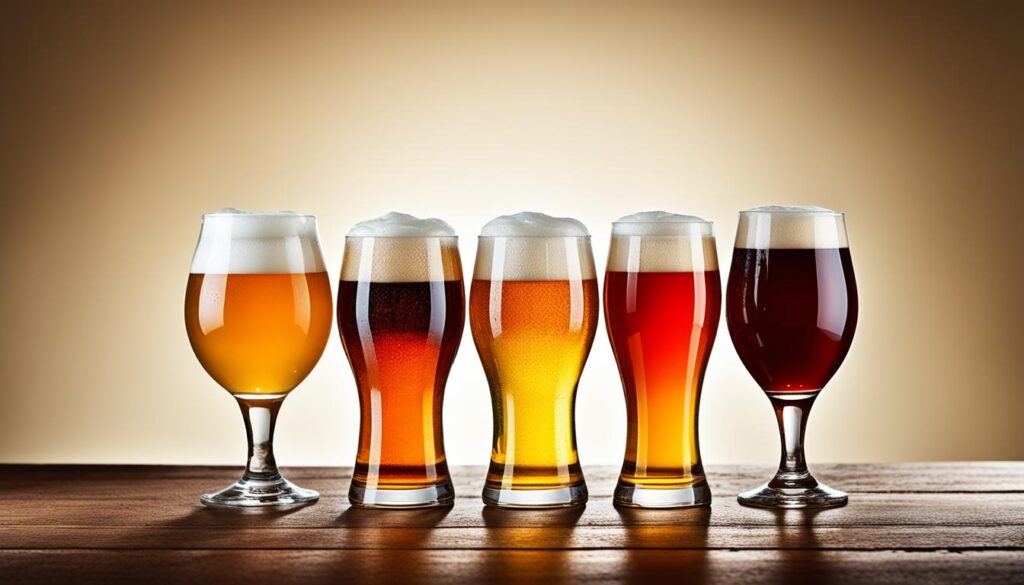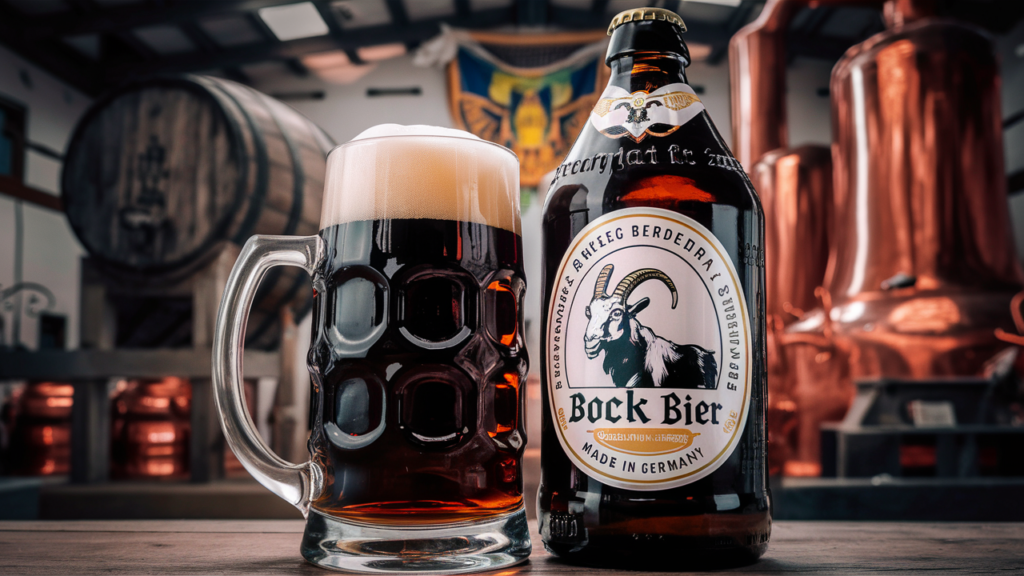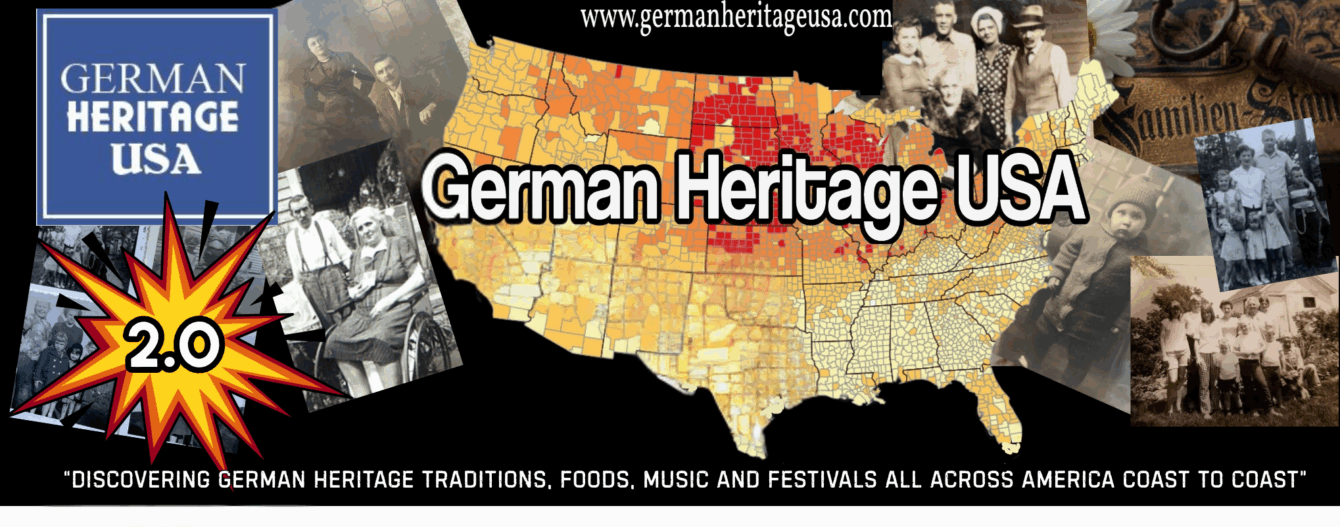Raising a Glass: The Rich History and Varieties of German Beer
GERMAN HERITAGE USA | AFFILIATE DISCLAIMER: This post may or may not contain affiliate links which means we may receive a commission for purchases made through links. We will only recommend products that we have personally used or that we truly trust. Learn more on our Private Policy and Disclaimer Page located under our Terms Of Service tab above.
Germany is often linked with a foaming beer mug. It’s intriguing to look into its history and how it has changed over time. Let’s delve into the rich history and variety of German beer, a drink loved around the world.

The old Germanic tribes loved beer before the modern era. They drank from Auroch horns, a sign of their status. Over time, German beer culture grew into something special. Germany became known worldwide for its great beer.
German beer is special, but what makes it stand out? The Reinheitsgebot, an ancient law, is a big part of its story. Let’s uncover what makes Germany a key place for brewing traditions.
Key Takeaways
- The ancient Germanic tribes were already brewing and drinking beer from Auroch drinking horns.
- German beer culture has evolved significantly over the centuries, becoming a global center of brewing excellence.
- Each beer glass, mug, and stein plays a unique role in preserving the flavor, aroma, and tradition of German beer.
- The Reinheitsgebot, or beer purity law, has been a crucial factor in shaping the quality and character of German beer.
- Germany is renowned for its diverse range of beer styles, from crisp lagers to malty bocks and refreshing wheat beers.
The Ancient Origins of German Beer
Germany’s love for beer started with ancient tribes over 2000 years ago. These early brewers used barley and grains around 800 BC. They began what we now know as German beer types.
Beer Culture of the Germanic Tribes
When the Romans met the Germanic tribes, they saw them drinking beer. They used Auroch drinking horns. These were simple, yet some had silver as a mark of high status.
The Role of Monastic Breweries
In the Holy Roman Empire, brewing became key to Germany’s culture. Monastic breweries stood out, perfecting brewing and creating new beers. They kept the secrets of brewing, shaping Germany’s unique beer scene.
The German Beer Purity Law
Germany’s beer tradition is rich thanks to the Reinheitsgebot, known as the beer purity law. It started in Munich in the 15th century. This law said beer could only be made with three things: water, malted barley, and hops.
It later spread across Germany. This made using natural ingredients important in brewing. Beer made under the Reinheitsgebot was known for being simple yet excellent in quality. It showed the natural tastes and smells of water, barley, and hops.
The Reinheitsgebot has changed over time but still guides beer making in Germany. Following this law has helped keep German beer special. It has also shown Germany as a top brewer, focused on high standards and perfecting their craft.
| Ingredient | Purpose |
|---|---|
| Water | Provides the essential liquid base for the beer |
| Malted Barley | Supplies the fermentable sugars and enzymes for brewing |
| Hops | Imparts bitterness, flavor, and aroma to the beer |
The Reinheitsgebot is vital in keeping German beer’s quality and taste true. Every sip reflects Germany’s dedication to brewing and the strive for the best.

Lagers: The Pride of German Beer
Lagers are a big part of German beer. They are known for being clean, and crisp. People all over the world love them. There are many types of lagers, showing the wide range of German beer making skills.
Helles: A Light and Crisp Classic
Helles is a light lager that’s easy to drink. It has just the right mix of malt and hops. This balance gives it a refreshing taste. Many in Germany pick a Helles to enjoy when it’s warm outside.
Dunkles: The Malty Counterpart
Dunkles is the opposite of Helles. It’s dark with a strong malt taste. You might even taste hints of caramel and bread. The hops in Dunkles bring a nice bitterness, making it a favorite for many.
Pilsner: The Hoppy Revelation
Pilsners add a hoppy twist to the lager scene. They are known for their rich gold color. Plus, a special mix of floral hops and spices. Pilsners, especially from Germany, are famous for their taste and balance.
Wheat Beers: Refreshing and Zesty
German beer has many types, like Weissbier, known as wheat beer. It’s from Bavaria and has a cloudy look. You can taste fruit and spice in it from the special wheat and yeast used.
Kristallweizen: Clear and Refreshing
Kristallweizen is a clear, yummy wheat beer. It’s light and shows off the tastes of wheat and hops. Because it’s clear, you won’t find any yeast in it. It’s great for a light, fizzy beer break.
Hefeweizen: Cloudy and Flavorful
Hefeweizen, a cloudy beer, is full of yeast flavor. It smells like banana and clove. It really shows what German wheat beers are all about.
Dunkelweizen: The Dark Wheat Beer
If you like your beer rich, Dunkelweizen is a good pick. It’s dark and has a sweet, malty taste. It still has the classic wheat flavor and a bit of hop. This beer goes well with big meals, showing off Hefeweizen style’s variety.
Bocks: The Liquid Bread
German bock beers have a deep history. They began in monasteries to help monks during Lent. These beers are known for their rich, malty taste and high alcohol.
The bock style has many types. Maibock is light and gold, made in spring. Doppelbock is rich and dark, with a lot of malt and more alcohol. The Eisbock is special. It is made by freezing the beer, making it even stronger.
People love German bock beers at spring festivals. They enjoy them with German food. These beers are a big part of German culture, perfect for special times or festivals.

| Bock Beer Style | Characteristics | Alcohol Content |
|---|---|---|
| Maibock | Light, golden, crisp finish | 6.3% – 7.5% ABV |
| Doppelbock | Rich, malty, full-bodied | 7.0% – 12.0% ABV |
| Eisbock | Concentrated, potent | 9.0% – 14.0% ABV |
German Beer
Germany’s beer culture is famous around the globe. Märzen and Rauchbier are two special types that show this tradition well. Each kind offers a unique and interesting taste for beer lovers.
Märzen: The Oktoberfest Favorite
Märzen is a type of lager from Munich’s Oktoberfest. It’s brewed in March and has a bit more alcohol. This makes it great for the fun times at Oktoberfest. Its amber color and tasty flavor make it the perfect beer for this festival, bringing people together from all over the world.
Rauchbier: The Smoky Delight
Rauchbier comes from Bamberg. It’s known for its smoky smell and taste. This special flavor comes from the use of smoked malts. They give Rauchbier a unique and rich taste that beer fans love.
At Oktoberfest, you can enjoy Märzen’s rich taste. Or you could try the unique Rauchbier with its smoky notes. Both of these beers show Germany’s dedication to great beer and keeping old traditions alive. They are favorites that bring joy to people who love beer all around the world.
The Grandeur of Oktoberfest
Every autumn, the city of Munich in Bavaria, Germany, comes alive with the vibrant sights and sounds of the world-renowned Oktoberfest. This 16-day celebration is the largest beer festival in the world, drawing millions of visitors from around the globe. They come to enjoy the rich traditions and festivities that have defined German Oktoberfest for generations.
Traditions and Festivities
Oktoberfest is a true feast for the senses, with a kaleidoscope of colors, music, and the aroma of traditional German fare. The festivities begin with a grand procession, as elaborately decorated horse-drawn carriages and costumed marchers parade through the streets. They celebrate the city’s proud brewing heritage. Across the festival grounds, revelers don their finest Lederhosen and Dirndl, the traditional Bavarian attire.
The Märzen Experience
At the heart of Oktoberfest are the festival’s special Märzen beers, brewed just for the occasion. These full-bodied, slightly stronger lagers, with balanced malty and hoppy profiles, have become the quintessential Oktoberfest beer. As the taps are opened, the air fills with the sound of clinking glasses and cheerful laughter. Everyone looks forward to enjoying the unique flavors of these seasonal Märzen brews.
Oktoberfest is a celebration that goes beyond beer-drinking. It offers a mix of traditional German cuisine, live music, and a vibrant atmosphere that captures everyone’s hearts. Whether it’s the lively beer halls, the festive parades, or the camaraderie shared among participants, the Oktoberfest experience is indeed unique. It’s a testament to Germany’s ongoing love for its rich beer festivals and the unique Märzen beers that characterize them.
Drinking Songs: Celebrating German Beer Culture
The heart of German beer culture shines through in drinking songs. They’re called “Trinklieder” in the local language. From traditional tunes to loud anthems, they bring people together. They create a feeling of communal experience among beer lovers all over Germany.
“Ein Prosit” is a famous German drinking song. You’ll hear it at places like. It’s a fun song that encourages everyone to cheer with their drinks. It shows the heart of beer culture in Germany, making it a key part of their identity.
In small village taverns and big beer halls alike, these songs speak to everyone. They talk about love for beer and the fun of being together. They are the songs of a culture that treasures beer as a big part of their traditions. People share this love through songs and enjoying a good beer together.
German Breweries: Guardians of Tradition
Breweries are the heart of German beer culture. There are thousands of them everywhere. From small ones run by families to big industrial places. These German breweries keep old traditions alive. They also use new ways to make top-quality beers. Places like Bavaria and Munich have deep beer traditions. These go back to old monasteries where brewing started.
From Monastic Origins to Modern Giants
In Germany, making beer is an old tradition. Today’s top breweries can look back to the start. They started in old monasteries. These places helped perfect how beer is made. They also created many different styles of beer we enjoy now.
The Art of Brewing Perfection
German breweries still focus on making top-notch beers. Brewers learn for a long time to be perfect. They pick ingredients carefully and watch fermentation closely. They do all of this to keep up the great name of German beer.
German Beer Day: A Nationwide Celebration
On April 23rd, Germany celebrates German Beer Day with big excitement. It’s a day to honor the country’s great brewing heritage and love for beer culture. Each year, this event shows how important beer is to German life.
During this celebration, breweries open up for everyone. They welcome those who love beer to see how it’s made. You can learn all about making the best German beers. This includes picking the best ingredients and using special techniques passed down over time.
| Celebration Activities | Highlights |
|---|---|
| Brewery tours | Insight into brewing methods and traditions |
| Beer tastings | Sampling a diverse range of German beer styles |
| Educational workshops | Exploring the history and culture of German brewing |
| Traditional music and food | Immersing in the convivial atmosphere of German beer festivities |
This celebration shows how much Germans care about their brewing heritage. It’s a time for beer lovers, whether local or from far away, to join in. Everyone comes together to celebrate the long-lasting German beer culture.
“German Beer Day is more than just a festival – it’s a celebration of our nation’s unwavering dedication to the art of brewing. It’s a chance for us to share our passion with the world and honor the generations of brewers who have made German beer synonymous with excellence.”
People who join German Beer Day learn a lot about beer making, history, and joy. This day highlights Germany’s deep love for its famous drink. It shows how Germany remains a top place for beer culture and brewing heritage in the world.
Conclusion
Germany’s beer culture is amazing! It’s full of tradition, many types of beer, and Oktoberfest. This festival is famous for its fun and drinking songs. The Reinheitsgebot law shows how much they care about making good beer. Both small and big breweries make their country proud by making high-quality beer.
People in Germany love their beer. They enjoy different types like lager, wheat beer, and bock. Whether it’s at a festival or just a drink, beer is an important part of their culture. Their hard work in brewing shows the world what they can do. This makes Germany very special when it comes to beer.
Thinking about German beer culture makes us all appreciate their dedication. They really take pride in their beer. This love for beer spreads happiness worldwide. It makes us want to celebrate the great beer from Germany. Cheers to their wonderful beer!
FAQ’S
What were the drinking vessels used by ancient Germanic tribes?
When the old Romans met the Germanic tribes, they were drinking beer from Auroch horns. Some had silver edges, showing they were for important people. This was different from our usual beer glasses today.
When did brewing first begin in Germany?
Brewing in Germany started around 800 BC. At that time, Germanic tribes were trying to make beer from barley and grains. Soon, brewing became a key part of society, especially with the help of local monasteries.
What is the Reinheitsgebot, and how has it shaped German beer?
The Reinheitsgebot started in 15th century Munich. It said beer could only have water, barley, and hops. This way, the law helped make German beer simple and all-natural.
What are some of the popular lager styles in Germany?
In Germany, lagers are a big deal. They have types like Helles (light and crisp), Dunkles (malty), and Pilsner (from Pilsen, Czechia, with a bitter taste).
What are the different styles of German wheat beers?
German wheat beers come in different styles. Some are Kristallweizen (clear and fresh), Hefeweizen (cloudy and tasty), and Dunkelweizen (dark wheat).
What are some of the distinctive bock styles of German beer?
The bock style has a neat history with monks making it for fasting. Bocks are strong, malty, and high in alcohol. There are Maibock, Doppelbock, and Eisbock types.
What are Märzen and Rauchbier, and how are they unique to German beer?
Märzen is a March-brewed beer served at Oktoberfest, with a malty taste. Rauchbier comes from Bamberg, with a smoky flavor from using smoked malts.
What is the significance of Oktoberfest in German beer culture?
Oktoberfest in Munich is a huge, 16-day celebration of beer. It showcases Märzen beers, which have a strong yet balanced taste.
How do drinking songs contribute to German beer culture?
Drinking songs are a big part of German beer culture, known as “Trinklieder.” They range from folk tunes to fun anthems, bringing people together.
What is the role of breweries in German beer culture?
Breweries are very important in Germany, from family-run ones to big companies. They keep old traditions alive while using new methods to make top-notch beers.
What is German Beer Day, and how is it celebrated?
German Beer Day is on April 23rd. On this day, breweries welcome visitors to celebrate Germany’s brewing culture. People can learn and enjoy great German beers.
